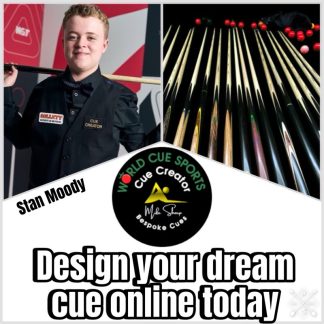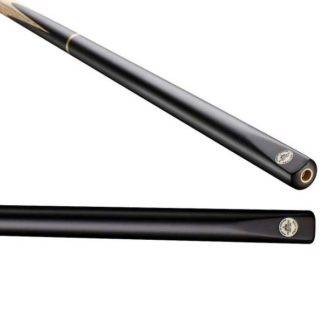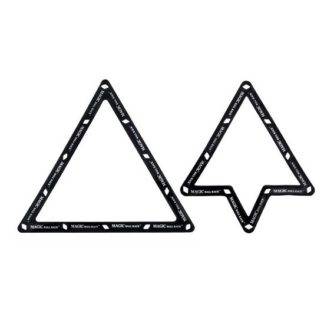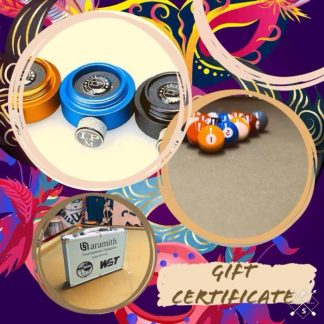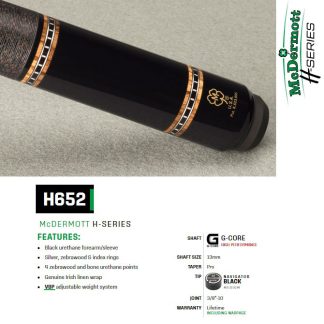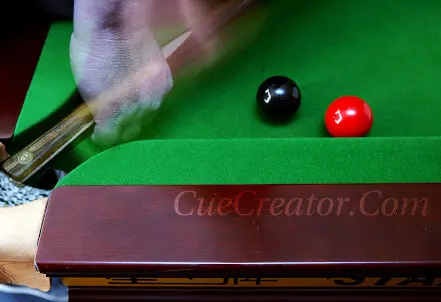Frequently Asked Questions
Cue Creator Cues®, Manufacturing standards are a step above our competitors. With our high attention to quality, performance and the latest in manufacturing standards rewritten by Cue Creator®, you’ll have all you need to improve your cue sports game.
We make our cue shafts using North American Ash and Maple and are 100% American Made.
Our decorative woods are from around the world mainly sourced in the USA, with all cues being checked by the director for quality and specifications in Sydney, Australia before being finished.
Pricing then varies depending on the woods used and splicing picked depending on your order.
This helps the cue to be made in the correct length and achieve a good balance point. The balance point is when you put your cue under the cue to find that measurement and most will be from 16.5 inches (41.91cm) to 18 inches (45.72cm) from the butt end is a good guide on when measuring your cue.
The standard one-piece cue is made using a 48-inch (121.92cm) shaft for a 60-inch (152.4cm) cue and then splicing on the butt wood. We do have a Pro Version one piece that uses the shaft wood from butt to tip. In this case the feel and balance of the cue feels much better than anything around. This is of course a more expensive way to make the cue as the best in ash or maple needs to be selected.
For a standard one piece to three quarter we don’t believe there’s a difference at all and it all depends then on the size of the case your happy to carry. We make a joint engineered by Cue Creator® in the USA that has mush less side to side movement and helps in the feel of the cue. In these standards made cues there’s no difference at all in playability.
The same can’t be said for two-piece cues. The two-piece cues is more common in American Pool but seen in some snooker cues. These are more convenient to carry around but the playability due to balance and cue weight makes it not a good playing cue for snooker over both three quarter and one-piece cues.
Ash or Maple is used on the shaft and hand planed down with various woods such as Ebony, Macassar or Rosewood glue onto these areas. The woods are then glued, and other decorative woods are used depending on the design picked by you our client.
We would recommend checking your cue every 6 months for the look and feel of the wood and keep it up the maintenance.
For custom made cues to your specification ordered they have a lead time of 14 weeks for standard ranges and 18 weeks for the Pro Version one-piece cues.
These times are way below the industry standard which you’ll see if checking other manufactuers.
The only way to check a cue is like a gun barrel when sighting and look along the cue with one eye shut.
Keeping these things clean as well as maintaining enough oil and wax on your cue will make it last for many years’ time.
During the development of this website we have sourced the highest quality products and woods that are available. Combine this with the best computer software and the latest engineering technology and we have what we believe is the future, for billiard cue manufacturing.
We do of course use handmade splicing on all our Snooker / English cues in this range, finishing the cues. The result is a cue that is custom made to your choices and configuration and without doubt, one of the best cues available in the world!
So please enjoy Creating your next cue. It will no doubt be constructed from the best materials, using the latest technology and designed exactly how you personally chose to do so.
We have great knowledge in Cue Sports and have been involved with it for over 25 years.
Our Team

Peter Sharp
Director

Michael Sharp
Director

Michelle Richardson
Accounts

Stephen Hotop
Accounting Small Business
We’ll be on the lookout for players in other cue sports like Chinese Pool and Carom and then increasing our Snooker players over time.
Stuart Bingham – World Snooker Champion 2015

Stuart Bingham 2015 World Snooker Champion
Stuart’s first title was the Australian Open in 2011 with his second in the 2014 Shanghai Masters. The following year he won the World Title in 2015 and then the Welsh Open in 2017.
Cue Creator® founder Mike Sharp met Stuart around 2010 and spoke with him at various events since. We found Stuart one of the most approachable players on the circuit that really takes his time signing autographs and is always polite to others.
Alfie Lee
When visiting the UK in 2016 we found Alfie playing on a poor-quality pool table so we upgraded the table to a Supreme. We’re sure Alfie with the dedication he shows and love of the game will become a household name in years to come.
Alfie’s Facebook
Mirjana Grujicic

Mirjana for Cue Creator® – Image by @ipaniza
Her Country used to sponsor players to go to events but due to the economic times the country has faced it has been reduced.
Mirjana has won many titles 16 National Titles and represented her country in the World Games in 2013 and 2015.
- Don’t leave your cue in a hot place like a car due to that the timber will warp. That also applies to extreme cold as well
- Check that the joints are clean as well as a good ferrule as they can both create noises in the cue
- Burnish the side of your tip and keep it in good order and check a few weeks before an event that it’s going to be in good order before it and you have got used to it.
- Check a cue requires sighting down like a gun barrel this way you can see more than any other method. A common belief is to roll it on a table but that’s not as accurate as sighting along the cue. As there’s a flat spot depending on the balance point this can make a shaft lift in most cases.
Storing your cue
Our belief is that once you have arrived home if you want your cue to stay straighter for a longer time is to use a rubber hanger. This helps the shaft weigh being pulled on and we’ve found this method is far better than anything else around.
Cue Cases in some cases don’t hold the cue that well and if they are either hot or cold contain moisture in the case.

Cue hanger for billiards
Oiling your Cue
All cues over time need oiling as it helps keep a certain amount of moisture in a cue. A common amount is around 8-10% so if you have a digital moisture gauge you can check you cue.
We’ve found as you will have that there’s many different oils around and many cue companies make their own blends. The oil we use is called Liberon finishing oil but you can also use boiled linseed oil or linseed oil. We found standard linseed oil can become sticky in certain countries depending on the humidity.
Cues should be sanded down first with a 240 grit at most but I would recommend a 400-600 wet and dry sandpaper. Between coats of oil use 000 Steel wool.
Oiling a cue properly can take 2-3 days and applying coats until the cue becomes tacky and isn’t drying.
At that time you need to then rub it back with a cloth until all the tackiness is gone and your cue will be ok for 12 months or longer.
A cue that hasn’t been oiled in ash will show visible signs of the grain opening.

Cue oil finishes and shaft care
Some basics are all the same, like running in a tip. Once you’ve installed the tip and trimmed to the edges etc and shaped it you need to do the following if you want it to bed in evenly.
If you hold your cue the same way when playing screw shots or topspin you’ll end up flattening out one spot and then like most do re shape it and it collapses again. The correct method is to roughly shape the tip and then hold your normal way playing some stuns and screws. You then keep rotating the butt around playing the same shots and rotate again.
This method helps the whole tip bed in and condense the leather. Once this has been done for an hour of play you can then shape your tip and you’ll notice it doesn’t collapse at all.
All the below Cue Sport games use various size balls and you should thoroughly investigate the needs of the game and try different cues before deciding on a cue specification.
- Snooker players use a 28.5mm butt to 30.5 and a ferrule between 9.3 to 9.8mm (Many Pro players now using 28.5 – 29mm
- For English Pool the cues are 8mm – 9mm in tip size (most pro players closer to 9mm)
- For USA Pool the butt sizes are 32mm-33mm and ferrules between 11.5 to 13mm
- For Carom the cues are shorter 56 inches (142.24cm) and 12mm – 13mm
- Chinese Pool the cues are normally a Snooker type of cue with a pool ferrule and 11.5-12.75
Cue Creator® Ash Shafts – Snooker / English Pool
The Ash we use is North American Ash and it’s hand selected for the straight grain and evenly spaced arrow shaped grain. Selection of the ash is made at lumber yards and we hand select the pieces we want.
Many timber yards make you purchase a pack of 144 pieces, but we have a good relationship with our vendor and hand select all of the timber used in our cues.
After selection in then naturally dries for over 1 year before being hand spliced into our cues and then rested in our factory in the USA at 8% humidity levels. This also helps it stabilize to be at the same levels as our other timbers used and helps the machining processes.
All shafts are checked for straightness between each craftsmanship process and then rested to cure naturally in our climate-controlled factory.
Cue Creator® Maple Shafys – Snooker / English Pool
Our Maple comes also from North America and is selected on the pattern that can be seen. We keep away from timber that has any blemishes that can be seen or tree knots. Maple shafts are great around the pack in snooker and English pool with the natural movement of the timber. With longer shot with power or side over a distance a maple shaft will move the cue ball more off line. Playing shots with reverse side and you’ll find a maple shaft will come inside the line of a ash shaft so it can create more angles and give more positional shots over a short distance.
All shafts are checked for straightness between each turn and then rested to cure naturally in our climate-controlled factory.
Kamui Black Soft Tip
- High-porosity allows chalk adhesion
- High-elasticity increases grip; reducing miscues
- Excellent balance between ball control and spin
Kamui Black Super Soft Tip
- Highest elasticity of the Black tips
- Maximum contact time between the cue ball and tip
- Generates more spin with a lower stroke speed


